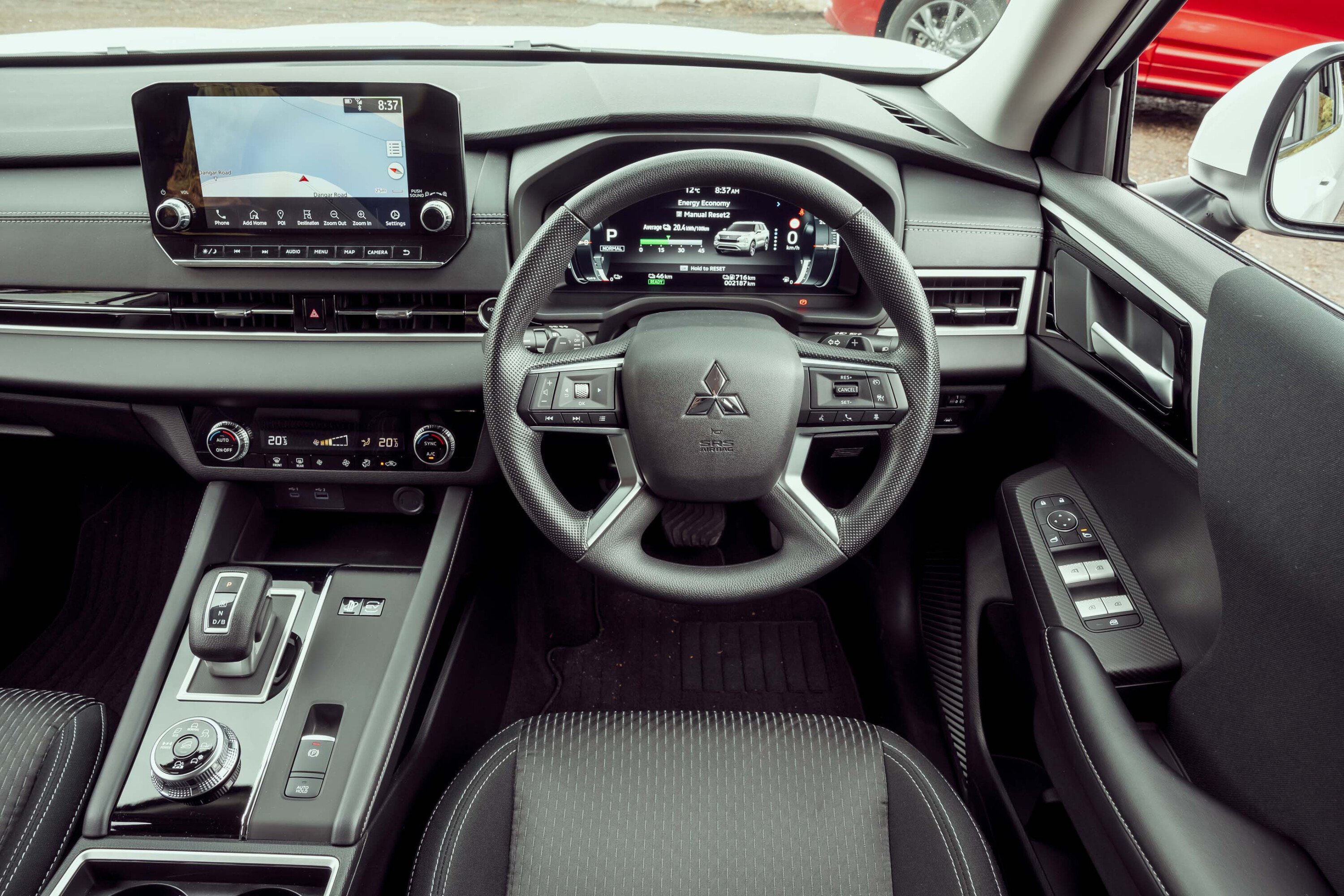
Things we like
- Plenty of torque on offer (while the charge lasts)
- Comfortable ride
- Spacious interior
Not so much
- Price jump over the petrol ES
- Prone to pitching
Introduced into Australia in early 2022, the Mitsubishi Outlander PHEV has seen an array of praise and appreciation from buyers in our Facebook comments. After spending the weekend in the base ES model, it’s easy to understand why.
Plug-in hybrid electric vehicle (PHEV) versions of the Outlander combine an internal combustion engine with an electric motor, allowing it to be powered by both electricity from an external power source and petrol.
Let’s take a look into what the ES has to offer and more importantly, what helps it to stand out.

Pricing and features
First impression of the ES was that it didn’t feel like your typical base grade model. There were quite a few additions that made the interior feel a bit more premium. This might be partially attributed to the $57,290 before on-road costs price-tag.
The additional $17k above the petrol AWD model can be naturally attributed to the PHEV technology, but the sprinkle of a few extra features have been added to help ease the jump as well. This includes things like a larger driver information display (7 vs. 12.3-inch), automatic high beam, increased touchscreen size (8 vs. 9-inch), wireless Apple CarPlay and built-in satellite navigation.

Total combined outputs for both the 2.4-litre engine and the electric motors are 185kW and 450Nm, way more performance than the petrol version, which produces 135kW and 245Nm.
According to Mitsubishi you can get an electric-only range of about 84km which means a nightly charge at home could be enough for most for daily commutes. Our digital editor Alex Inwood was able to assess real world consumption figures during his long-term loan.
It also removes the paranoia and range anxiety that comes with running low on range and not being close enough to a charger. When running low on battery range the vehicle also had the option to have the engine focus on charging the battery– an additional peace of mind if you’re prioritising a hybrid drive.
| 2024 Mitsubishi Outlander Plug-in Hybrid ES features | |
|---|---|
| 18-inch alloy wheels | Dual-zone climate control with rear air vents |
| LED headlights and daytime running lights | Cloth upholstery |
| 9.0-inch touchscreen infotainment system | Urethane steering wheel |
| Wireless Apple CarPlay | 40:20:40 split fold and reclining second-row seat |
| Wired Android Auto | Hill descent control |
| DAB+ digital radio | Terrain control |
| Six-speaker sound system | Trailer stability assist |
| 12.3-inch digital instrument cluster | Mode 2 and Mode 3 charging cables |
| Keyless start | |

Inside, the cabin exudes a modern vibe with an intuitively organized layout. The inclusion of Wireless CarPlay in an “entry-level” car is warmly welcomed, but the absence of keyless entry at this price point is disappointing.
Moving to the back seats, rear passengers enjoy generous leg and headroom, complemented by expansive square windows that offer panoramic views, although the narrowness of the rear window from the driver’s perspective may be a drawback.
Notably, the reverse sound chime catches attention with its uniqueness upon initial hearing– which is actually beneficial as it ensures people take notice– and you get used to people watching you reverse.

Safety
Following the Mitsubishi Outlander lineup, the PHEV ES model boasts a five-star ANCAP safety rating.
It received scores including 83 percent for adult occupant protection, 92 percent for child occupant protection, 81 percent for vulnerable road user protection, and 83 percent for safety assist.
The ES comes equipped with a comprehensive list of safety features such as:
- Eight airbags
- AEB with pedestrian, cyclist and reversing detection
- Emergency lane assist
- Lane-departure warning
- Blind-spot warning
- Rear cross-traffic alert
- Automatic high beam
- Traffic-sign recognition
- Driver-fatigue monitor
- Adaptive cruise control
- Front and rear parking sensors

Key rivals
There aren’t a heap of plug-in hybrid options in the SUV realm, but in terms of economical vehicles to cross shop, one might consider:
- Toyota RAV4 (hybrid)
- Nissan X-Trail (e-POWER)
- MG ZS (PHEV)

Should I put it on my shortlist?
When considering the cost, plug-in hybrids struggle to justify their higher price compared to conventional internal-combustion alternatives, including the Mitsubishi Outlander PHEV ES.
While the savings at the pump may not immediately offset the initial investment, those prioritising driving experience and emission reduction may find value in the Outlander PHEV’s responsiveness and quiet operation, especially in urban driving.
However, the base ES model lacks some expected features and safety assistance equipment, making the upgrade to the Aspire variant, despite its added cost, a worthwhile consideration for those seeking additional amenities.
Overall, for drivers desiring an EV experience without the hassle of frequent recharging and long-distance travel, the Outlander PHEV ES stands as a practical recommendation.
Things we like
- Plenty of torque on offer (while the charge lasts)
- Comfortable ride
- Spacious interior
Not so much
- Price jump over the petrol ES
- Prone to pitching




